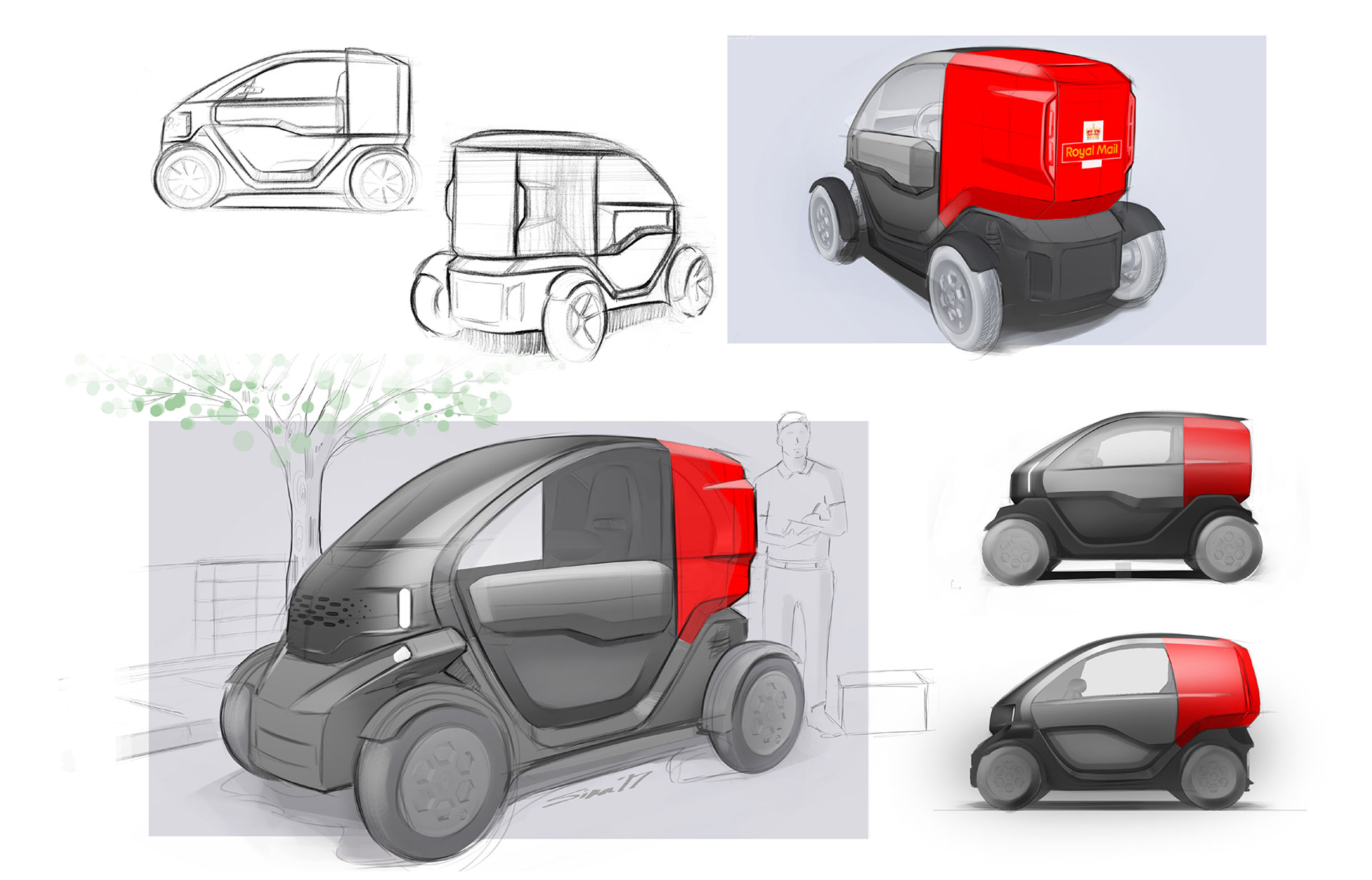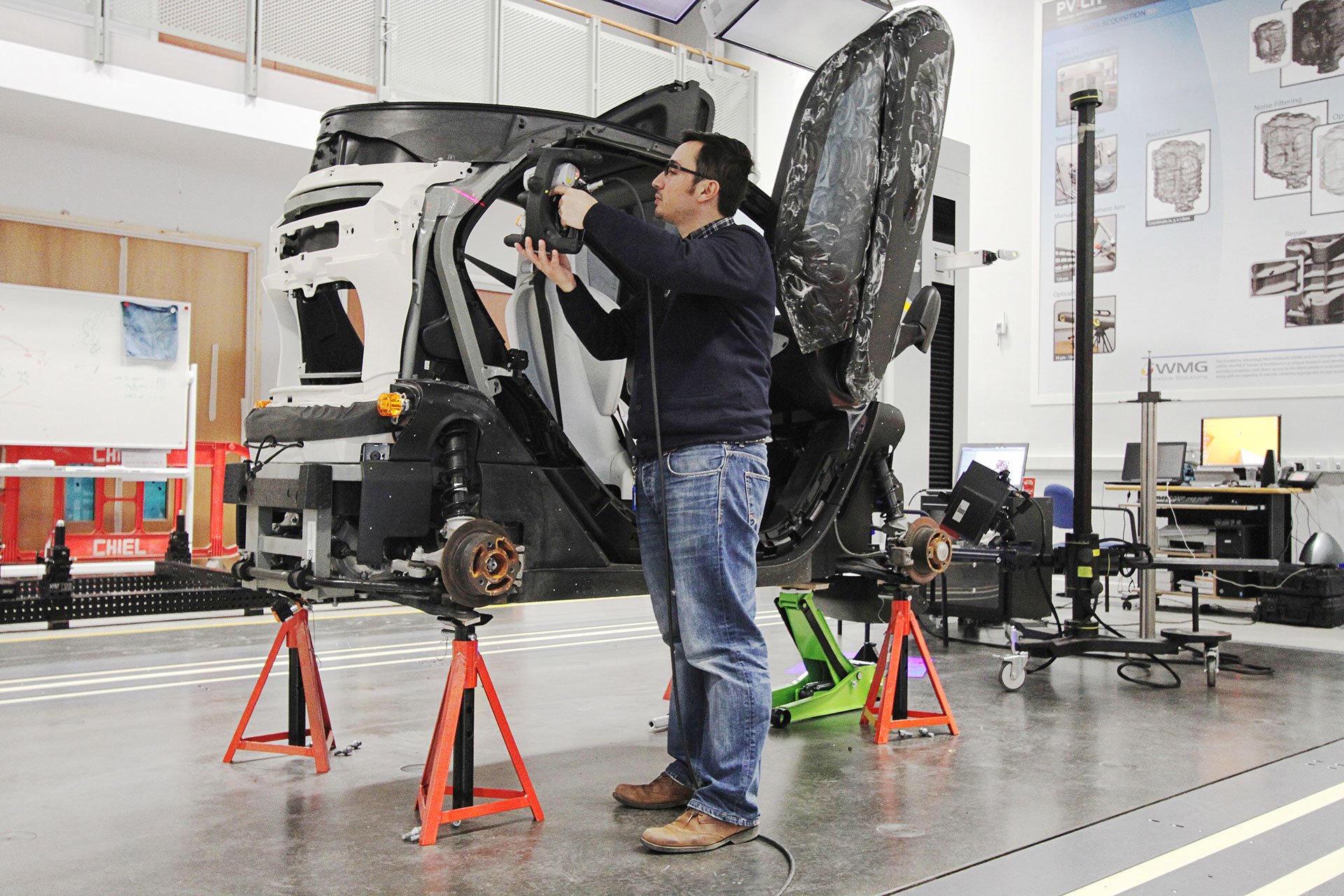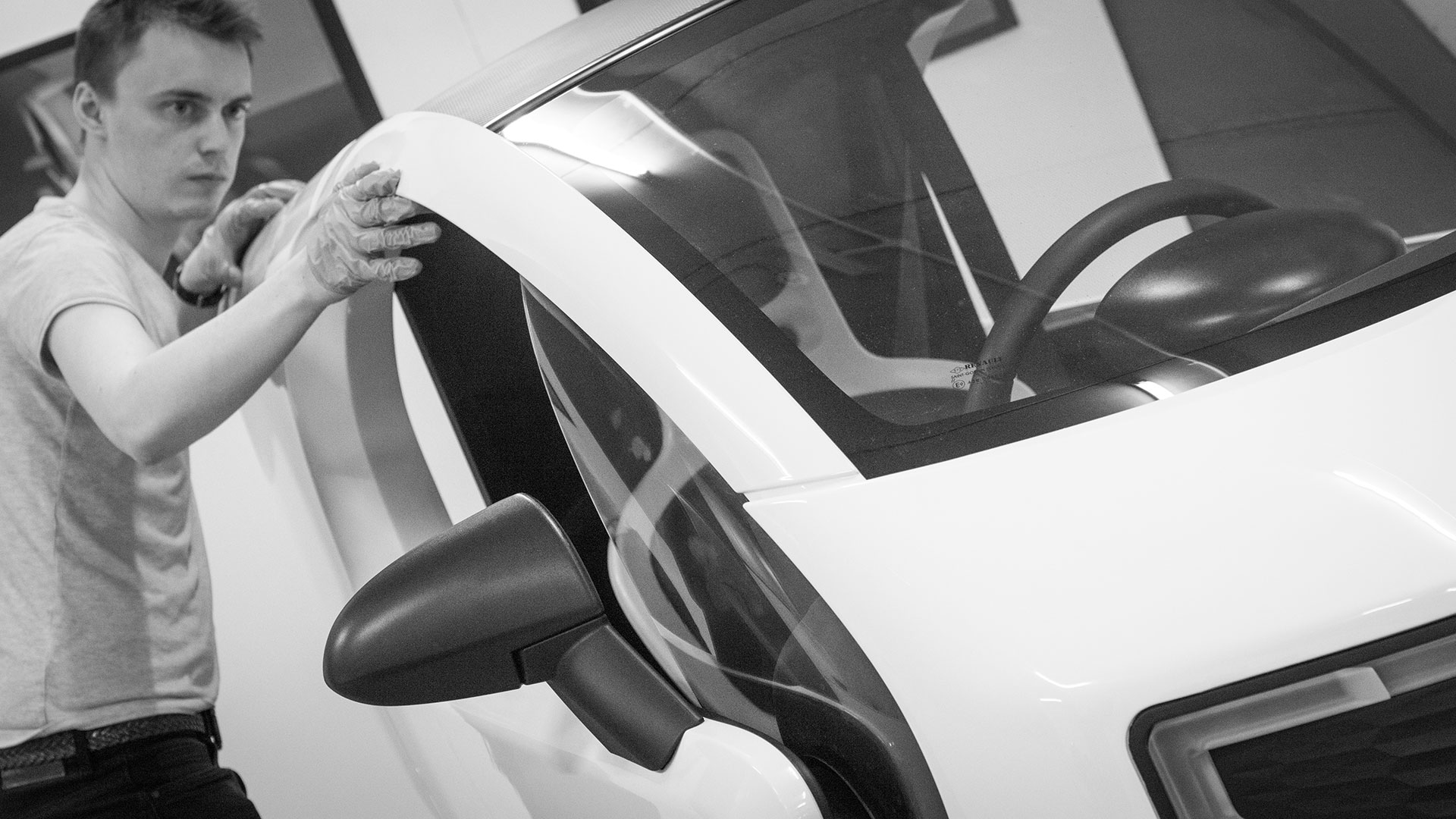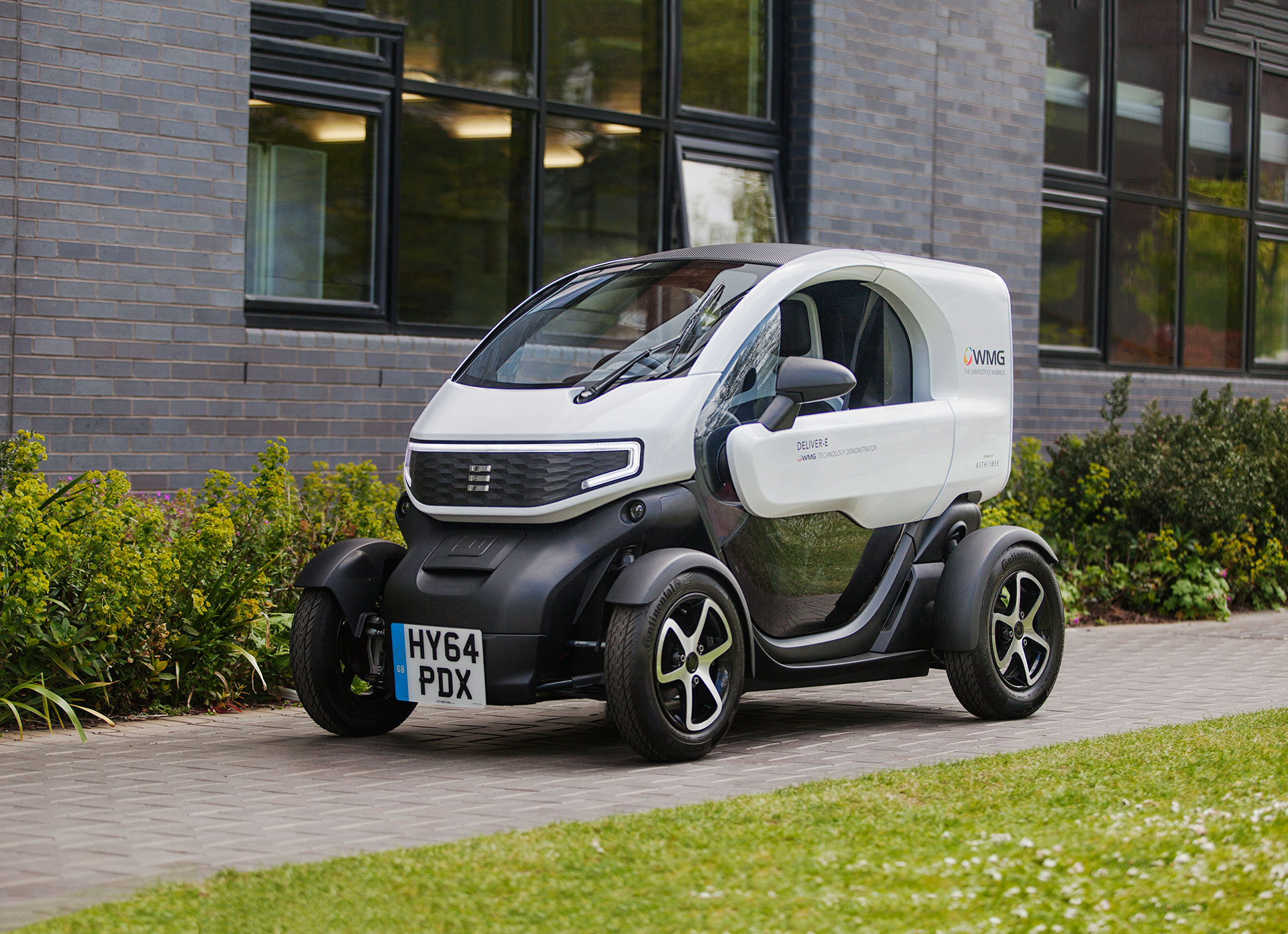The DELIVER-E is the result of an intensive 10 week collaborative project between Astheimer and the Warwick Manufacturing Group (WMG) to design and build an electric delivery vehicle prototype to satisfy this need. This unique collaboration showcases the design and prototyping capabilities of Astheimer and the advanced propulsion systems capabilities of WMG.
Background

Meet Deliver-E
Meet DELIVER-E, a quiet, compact, lightweight electric delivery vehicle prototype.
Developed by teams at WMG, University of Warwick and Astheimer as a technology demonstrator for a new type of electric delivery vehicle, DELIVER-E could make the courier industry greener and more efficient
Process
Using the Renault Twizy compact electric vehicle as a donor platform, a new internal layout was created to maximise potential cargo volume. This involved removing the rear passenger seat, extending the vehicle by 150mm and creating a van configuration capable of carrying 3 online delivery baskets; increasing the load carrying capacity to 300 litres.
In addition, a completely unique and appealing look was created with new front and rear lighting. The dash was also modified to enclose a new instrument panel to control the latest WMG electronics platform.

Design
Futuristic, Purposeful and Simple
Deliver-E is characterised through clean lines and fluid surfaces, reflecting the technologically advanced, intelligent and digital nature of the vehicle, with cutting edge 3 dimensional parametric patterns and “halo” LED lighting.
The proportions highlight the cargo carrying capacity of the vehicle.
A horizontal “floating” upper volume, gives a simple, purposeful look.

3D Scanning
To define the new body panels for the DELIVER-E, it was essential to generate detailed CAD data of the existing vehicle. This was achieved using advanced 3D scanning to capture a virtual copy. By scanning the exact donor platform to be refitted, all manufacturing imperfections were captured, enabling the team to design and engineer the panels to fit with minimum tolerances.

CAD Development
In total eight full CAD models of the car were created, including design changes, build strategy updates and feasibility feedback loops from suppliers, each one was an improvement on the previous iteration. Before commencing manufacturing, the full CAD underwent a digital mock up to check assembly conditions and to evaluate the design concept at full scale, the final sign off was conducted using Astheimer’s in-house VR equipment, along with photorealistic rendering software Autodesk VRED.
Parametric Design
To showcase the intelligent nature of the vehicle, Astheimer took the opportunity to utilise their latest parametric design capabilities by creating 3D fading patterns symbolising the connections in the battery cells. This was achieved by developing unique code using Grasshopper software.
Production
The donor vehicle was stripped and the spaceframe modified to maximise the cargo space, whilst taking care to maintain the structural integrity of the vehicle. For speed and efficiency, the body panels were created by directly milling ABS blocks, and were finished with automotive paint and wrapping. The fit and finish was completed successfully to an automotive standard.

Assembly
During the course of several dry fittings, components were refined and new electronics installed. The mounting of the front grill completed the vehicle’s character and marked the end of the 10 week project.

